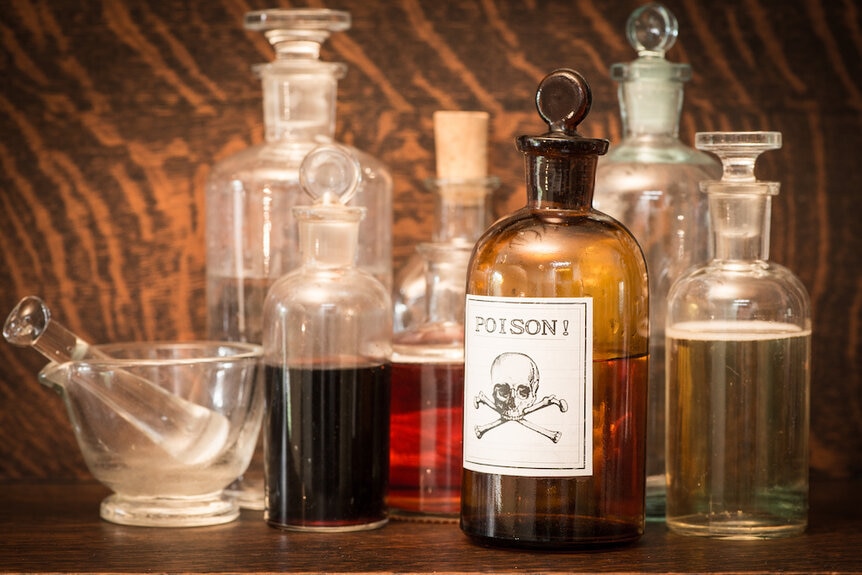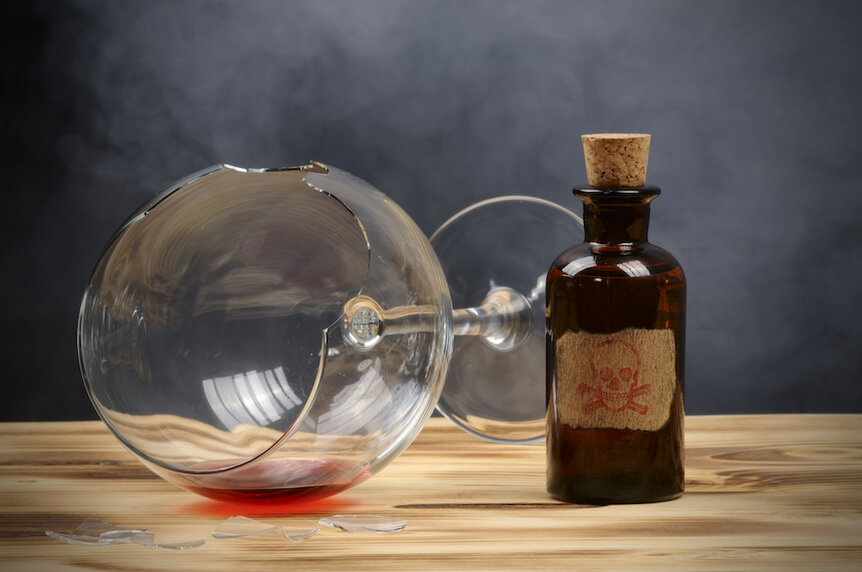Create a free profile to get unlimited access to exclusive videos, sweepstakes, and more!
Can you really build an immunity to iocane powder? The science behind 'The Princess Bride'
Is building up an immunity to a deadly toxin scientifically possible or is it inconceivable!?

Some 35 years ago, The Princess Bride taught a generation of kids to travel fire swamps and stomp out evil no matter where it lies or how many fingers it has, all in the pursuit of wuv, twu wuv — or vengeance, depending on the circumstances.
In one of the movie’s most memorable scenes, Westley, a.k.a. the dread pirate Roberts, chases his beloved and her three lovable captors to the Cliffs of Insanity. There, he engages Iñigo Montoya in a duel but spares his life, leaving him unconscious. Next, he fights with Fezzik and, despite all odds, comes out victorious. Finally, he catches up with Vizzini, the purported brains of the operation. Their conflict is more cerebral, consisting of a battle of wits with death on the line.
One of the classic blunders, right up there with getting involved in a land war in Asia.
The game is simple: two goblets filled with wine, one of them is poisoned. Except, things aren’t quite as they seem. Indeed, Westley has doped both glasses with the potent yet entirely fictional poison iocane. It has no odor, no taste, and dissolves instantly when poured into a liquid. Worst of all, it is almost immediately fatal at the right dosage. Westley and Vizzini drink, and Vizzini falls over, dead. Westley, however, walks away with his life. What gives? Turns out, Westley has spent the last several years slowly building up a tolerance to iocane powder. Is that possible, or simple fantasy?
DOES SOMETHING LIKE IOCANE EXIST?
As previously noted, iocane is a made-up poison, invented for the story. However, humanity has a long history with poisons of all different types. Throughout time, the poison of choice has shifted from hemlock to belladonna and later to strychnine and cyanide, with some others in between. The cycle generally progressed from discovery to use and finally to detection. Once a particular poison was described, understood, and eventually became detectable, its use tended to drop off in favor of something new.
Then there’s arsenic. The substance occurs naturally but in small doses. Each of us is exposed to arsenic all the time, through the food we eat, but the dose isn’t high enough and arsenic typically doesn’t accumulate. So, you’re safe. Probably.
You may have heard that arsenic exists in apple seeds and that’s true, but you’d have to eat so many apples your obituary would sound like the beginning of a grade school story problem. It’s estimated you would need to consume about 200 seeds, or roughly 40 apple cores for a fatal dose. Of course, there are plenty of variables surrounding those numbers, including how finely you chew the seeds, your body weight, and any pre-existing health problems waiting to be exacerbated.
Like iocane, arsenic doesn’t have a taste or an odor, and it can be dissolved in liquid. In fact, more than a few folks have met their end that way. When significant exposure occurs, it can cause hyperpigmented or patchy skin, muscle weakness and pain in the extremities, and lesions in the gastrointestinal tract. Your kidneys can shut down and if the dose is high enough your capillaries will start leaking, you’ll get an irregular heart rhythm, and your heart will stop.
The major difference between arsenic and iocane powder — and it is admittedly a big difference — is that arsenic doesn’t kill immediately. In the movie, Vizzini pulls a face and croaks before his body hits the dirt. It makes for a good on-screen gag, but the reality is a lot more gruesome. Even when exposed to a fatal dose, it can be hours or even days before the poisoned victim succumbs to their symptoms. Most poisons simply don’t trigger a catastrophic shutdown of the body quickly enough for narrative flow.
WHAT ABOUT TOLERANCE?
You keep using that word. I do not think it means what you think it means.
Let’s assume that we’ve come upon several vials of the famed iocane powder. Where we got it doesn’t matter, we’re not narcs. Not only have we got our hands on one of the world’s deadliest poisons, but we live the sort of life which lends itself to the occasional deadly disagreement. We might want a trick up our sleeve. We might want to build an immunity to poison.
When it comes to arsenic, our real-world allegory of iocane powder, it doesn’t appear as though you can build up a tolerance through increasing low-level exposure. As previously mentioned, most of us are exposed to arsenic all the time and a high dose will still put you in the papers every single time. When you consume arsenic, it is processed and flushed out by your body. Some of it may find its way into your fingernails and hair but those are eventually cut or fall away. If you have the benefit of evolutionary time, however, you might be able to build up resistance to arsenic in a population.
A community located in a village in the Andes appears to have adapted a genetic tolerance to arsenic over the course of thousands of years. There is a natural source of arsenic in the volcanic bedrock of the area, and it leeches into drinking water. Tests have documented levels of arsenic in the water 20 times higher than what’s considered safe by the World Health Organization. What’s more, there’s evidence this population has been drinking arsenic-laced water for at least 7,000 years. Scientists found mummies from the region whose preserved corpses show signs of arsenic poisoning.
However, unless you happen to hail from that particular village and are lucky enough to be part of the quarter of the population with the right mutations, you’re probably out of luck. Not only can an individual not develop immunity to arsenic, but attempting to do so is a pretty good way of getting sick. While the poison doesn’t exactly accumulate in the body, its effects can. Continued exposure to moderate amounts of arsenic results in cancers and other chronic conditions down the line.
Of course, arsenic and iocane are not exactly the same. So, let’s look a little broader. Certainly, there are other toxins that people can and do build measurable tolerances to. Perhaps the most common example is alcohol consumption. Despite widely being used recreationally, alcohol is a poison by any reasonable definition.
Heavy drinkers commonly notice that it takes more and more for them to achieve the desired effect. One can even surpass a tolerance and transition into reliance. Once this process reaches a certain point, a person should only wean off alcohol with the supervision of a trained medical professional. At that point, abstaining from the poison can be more deadly than continuing to take it. At least in the short term.
You can also maybe acquire a mild tolerance to some metals, thanks to a class of binding proteins in the body kicking into overdrive. However, those tolerances are typically short-term. For the most part, poisons aren’t well tolerated, no matter how many times you’ve danced together. Maybe things are different in the beautiful yet flawed kingdom of Florin.



























